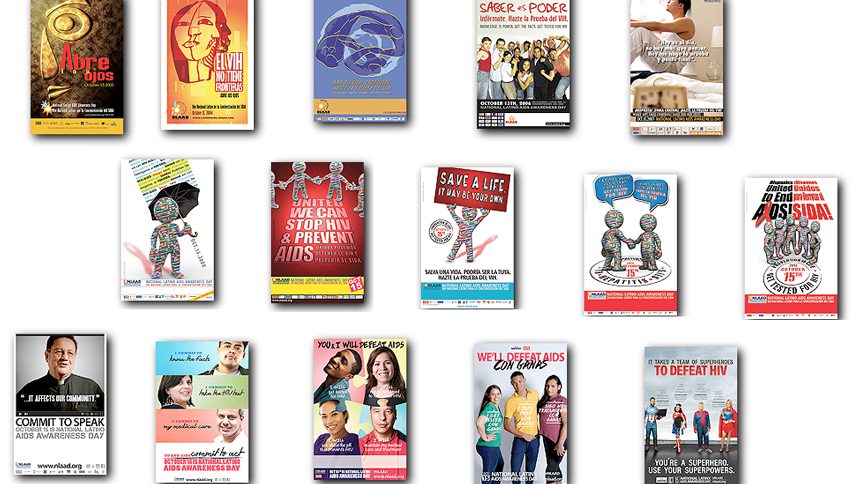Since 2003 when National Latinx AIDS Awareness Day (NLAAD) began, there have been many changes in this observance. Today we feature two unique perspectives on these changes.
Latino Commission on AIDS (LCOA) is the lead for NLAAD . Lucciano Reberte is LCOA’s Program Coordinator for the LEAD program that engages young gay/bi men and transgender Latinas who are living with HIV and at risk for HIV into health services. The LEAD program is based at the Oasis Latino LGBTS Wellness Center . Daniel Ravelo, LCOA’s Graphics and Website Manager, has designed communication tools for NLAAD since 2005.
Why NLAAD Matters
Lucciano: NLAAD is an important time for me because it reminds me how far I have come, but it also reminds me of all the work that still need to be done. As a person living with HIV, I believe that NLAAD is a key day to show up stronger than ever and fight against the stigma and discrimination that people living with HIV/AIDS face. NLAAD is a call to the community that I am part of. This is my opportunity to plant a seed that will conclude in a community getting tested for HIV, a community accessing PrEP or medical care, a community increasing condom use or being increasingly educated about how important is to know your HIV status. It’s a reminder of the importance –and possibility – of achieving viral suppression. NLAAD allows me to create a healthier world.
Daniel: NLAAD is a commemoration, a wake-up call. It’s about bringing attention to a health and social issue – HIV. For me, NLAAD is important because it educates people. Education is that tool that can make a difference in eradicating HIV. I try to create the best campaign visuals and a website that provides great user experience. I make sure that the design is complemented with meaning. And this meaning comes from understanding the final outcome of any resources we produce: agencies around the country will use these resources to create their events and then, people like me, like my friends, will attend these events and will grab a piece of information that can empower them.
NLAAD has Changed
Lucciano: NLAAD is no longer limited to get people tested. NLAAD is a range of tools to face HIV with responsibility.
Daniel: What changes every year is the creativity of agencies to put on events and the partnerships LCOA forges with other institutions, for example, to distribute HIV testing kits at no cost.
Lessons Learned
Daniel: To organizers, I say the success of your event will be as great as your passion and creativity. To community members, my advice is to personalize this information and make it about your own body. Asking “How will HIV impact me?” might prompt you to get tested and use prevention or treatment tools.
Lucciano: I would like to thank everyone who is speaking up and supporting NLAAD. One lesson is to keep those messages simple to make sure that the community understands it. Also please speak the language of the community who is going to receive the message. Be sensitive, be inclusive and the most important thing, listen.
Communication Changes
Daniel: The messaging has evolved in sync with community readiness, medical advances and the demographics of the people affected. Earlier on the message was softer and very generic. The first theme in 2003 was “Open your eyes”. The next years we promoted testing. By 2011 we started talking about keeping healthy. In 2015 we introduced the blue pill that prevents HIV. Today we call PrEP by its name; we feature people with different HIV statuses, gender and gender identity, sexual orientation; and most importantly, we empower them to take action.
Daniel: We used to print posters and more. Trainings used to be done by conference calls. Today we distribute our resources via PDF, and offer webinars. Some discussion is done through Twitter. In 2013 we launched the “Commit to Speak” campaign through Instagram. In 2014-15 we used Facebook and Pandora to reach the MSM and transgender population. I see digital communication and social media changing and so will the campaign.
Lucciano: Digital communication is now fundamental and one of the most effective ways to impact the community. It makes NLAAD visible for those that may not be connected to HIV prevention.
We thank Daniel, Lucciano, LCOA and their collaborators for their work. To observe NLAAD, use these resources:
Source: This article was reproduced by HIV.gov and published on October 11, 2017. Read original article here.


